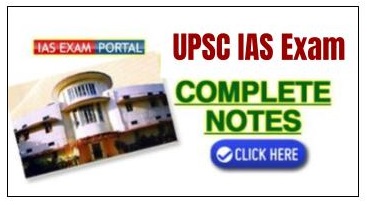(HOT) UPSC Current Affairs 2025 PDF
NEW! The Gist (OCT-2025) | E-BOOKS
THE GIST of Editorial for UPSC Exams : 02 June 2020 (Raja Mandala: Interest-based, not special (Indian Express))
Raja Mandala: Interest-based, not special (Indian Express)
Mains Paper 2:International Relations
Prelims level: India-Nepal ties
Mains level: Resolving border disputes between India and Nepal
Context:
- As the parliament in Nepal gets ready to approve a new map that will include parts of Indian territory in Uttarakhand, Delhi is bracing for yet another knock to a bilateral relationship.
- Many in the Indian strategic community believe that the train wreck was avoidable.
- But others view the collision between Delhi and Kathmandu as both inevitable and imminent.
- Even if the territorial issue had been finessed, something else would have triggered the breakdown.
Bigger fissures in relation:
- A closer look suggests that the...................................................................................
CLICK HERE FOR FULL EDITORIAL (Only for Course Members)
Factors India must consider:
- Any new framework for engaging Kathmandu must involve two important departures from the past in Delhi.
- First is coming to terms with Nepal’s natural politics of balance.
- The other is the recognition that Delhi’s much-vaunted “special relationship” with Kathmandu is part of the problem.
History of Nepal’s geopolitics:
- The founder of the modern Nepali state, Prithvi Narayan Shah, described Nepal as a “yam between two rocks”.
- He was pointing to the essence of Nepal’s geographic condition between the dominant power in the Gangetic plains on the one hand and Tibet and the Qing empire on the other.
- Contrary to the conventional wisdom in India, China has long been part of Kathmandu’s international relations.
- East India Company gained ground at the turn of the 19th century, Nepal’s rulers made continuous offers to Beijing to act as China’s frontline against Calcutta’s expansion into the Himalayas.
- Kathmandu also sought to build a coalition of Indian princes to counter the Company.
- Even after it lost the first Anglo-Nepal war in 1816, Kathmandu kept up a continuous play between Calcutta and Beijing.
- As the scales tilted in the Company’s favour after the First Opium War (1839-42), Nepal’s rulers warmed up to Calcutta.
- When the 1857 Mutiny shook the Company, Kathmandu backed it and regained some of the territories it lost when the Raj replaced the Company.
- As the fortunes of the Raj rose, Kathmandu rulers enjoyed the benefits of being Calcutta’s protectorate.
- India inherited this framework but has found it impossible to sustain.
Treaty of Peace and Friendship (1950) lost its appeal:
- The 1950 Treaty of Peace and Friendship gave the illusion of continuity in Nepal’s protectorate relationship with the Raj and its successor, independent India.
- That illusion was continuously chipped awa........................................................................................
CLICK HERE FOR FULL EDITORIAL (Only for Course Members)
Weakening of “special relationship”:
- Once the Chinese Communist Party consolidated its power in Tibet and offered assurances to Nepal, Kathmandu’s balancing impulses were back in play.
- At the risk of oversimplification, Nepal’s foreign policy since the 1950s has, in essence, been about weakening the “special relationship” with India and building more cooperation with China.
- Kathmandu has used different labels to package its desire for greater room for manoeuvre between its two giant neighbours — non-alignment, diversification, “zone of peace”, equidistance, and a Himalayan bridge between India and China.
- The stronger China has become, the wider have Kathmandu’s options with India become.
Way forward:
- It makes no sense for Delhi to hanker after a “special relationship” that a large section of Kathmandu does not want.
- If Delhi wants a normal and good neighbourly relationship with Kathmandu, it should put all major bilateral issues on the table for renegotiation.
- Such issues should include the 1950 treaty, national treatment to Nepali citizens in India, trade and transit arrangements, the open border and visa-free travel.
- Delhi should make it a priority to begin talks with Nepal on revising, replacing, or simply discarding the 1950 treaty.
- It should negotiate a new set of mutually satisfactory arrangements.
- India had conducted a similar ......................................................................................................
CLICK HERE FOR FULL EDITORIAL (Only for Course Members)
Conclusion:
- Discarding the appearances of the “special relationship” might, in fact, make it easier for Delhi to construct a more durable and interest-based partnership with Kathmandu that is rooted in realism and has strong popular support on both sides.
Online Coaching for UPSC PRE Exam
E-Books Download for UPSC IAS Exams
General Studies Pre. Cum Mains Study Materials
Prelims Questions:
Q.1)With reference to the World Health Organization Foundation, consider
the following statements:
1. It is headquartered in New York.
2. The foundation is legally independent from the WHO.
Which of the statements given above is/are correct?
(a) 1 only
(b) 2 only
(c) Both 1 and 2
(d) Neither 1 nor 2
Answer...............................
CLICK HERE FOR FULL EDITORIAL (Only for Course Members)

